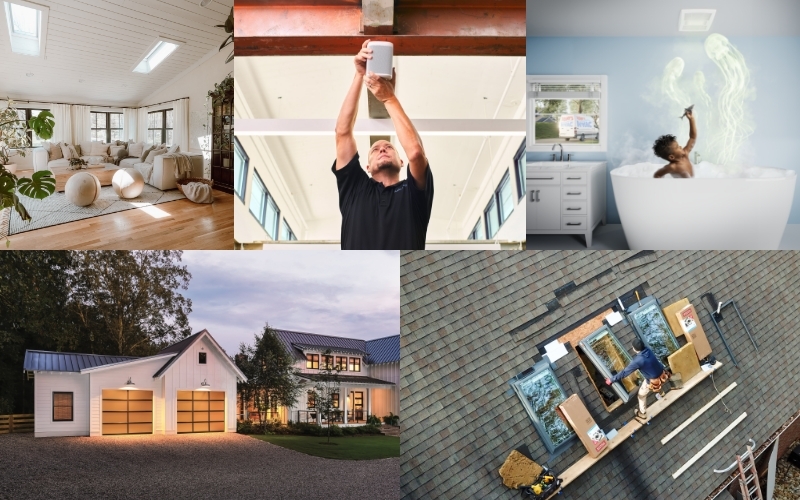3. Smart, healthy and flexible home trends are on the rise.
Lifestyle and functionality are a driving force in home improvement, including:
How people think about the home
How they prioritize improvements
Where they want to invest their available funds
A desire for connection and community, paired with the continued need for privacy, function and sanctuary in the home, will lead to evolved ways of thinking about living spaces. Investments in smart, healthy and flexible homes are expected to prevail and extend into kitchen and bath designs.
Smart home technology: In the kitchen and bath, smart faucets are the most popular investment, offering significant value via water efficiency, touch or touch-free activation and a fingerprint-resistant finish. The bottom line? Homeowners get a lot of value from a pretty minimal investment.
4. Millennials and Gen Z represent key opportunities as they come into their prime homebuying years.
Millennials and Gen Z share some behaviors and will respond better to specific communication strategies.
Millennials — born between 1981 and 1996 — are in their prime homebuying years, though 92% of millennials say inflation has impacted their goal. Among those who still intend to buy, there is currently not enough housing stock to meet demand. This imbalance has driven housing costs to record highs: John Burns Real Estate Consulting calculates Charlotte as the most overpriced market in the U.S. at 66%, despite the fact that Charlotte is considered relatively affordable at a national level.
Despite these challenges, millennials are driving the homebuying and home improvement market, accounting for both the highest spending and highest number of projects as compared to other generations.
Gen Z (born 1997–2012) is on the cusp of their prime homebuying years. As early adopters, their behaviors drive trends that are expected to reach other generations within the next five to 10 years.
If you want to make a connection with the youngest cohort of homebuyers, consider these tips:
Educate and empower them. They will be entering the home improvement stage of life later than their older siblings and do not want to appear ill-informed in the face of major financial decisions. Become a trusted, accessible resource by validating their questions (and experience) — “It is OK to not know everything” — and educating them on the types of questions to ask. Creating a great online experience will also help empower them by providing the information they want and the tools they need to make informed decisions about homeownership.
Provide clear examples and visual references. They are visual learners and buyers. Understand the importance of mobile and video in their journey to learn and understand. In a work setting, give clear examples of what you’re looking for that they can observe.
Keep the dialogue going. They are looking for ongoing, quick-hitting feedback. Engage in open and honest communication to earn their trust.
5. Social media continues to be a source for unique renovation ideas.
From small appliance garages to DIY countertops and peel-and-stick backsplashes, social media is changing the game for home improvement. Platforms such as Instagram, TikTok and Pinterest give consumers a glimpse into friends’ and influencers’ homes. These platforms have heavily informed home improvement choices and remain an important source for unique renovation ideas. Social media platforms, however, can give anyone the ability to disrupt the design cycle, and experts predict this will lead consumers to make purchasing decisions based on personal expression more so than trends.
Of these trends, some of the most popular include:
Costco doors: Small doors built between a garage and pantry for grocery unloading into the home.
Small appliance garages: Moveable backsplashes or special cabinet configurations to hide small appliances and keep kitchen counters clean.
DIY countertops and backsplashes: Peel-and-stick, spray-on marble effect and other techniques make it easy for homeowners to transform their kitchen with minimal investment.
Have questions about how consumers may tackle home improvement projects in 2023? Want to know how Wray Ward can help your business navigate the industry landscape this year and beyond? Email me.



